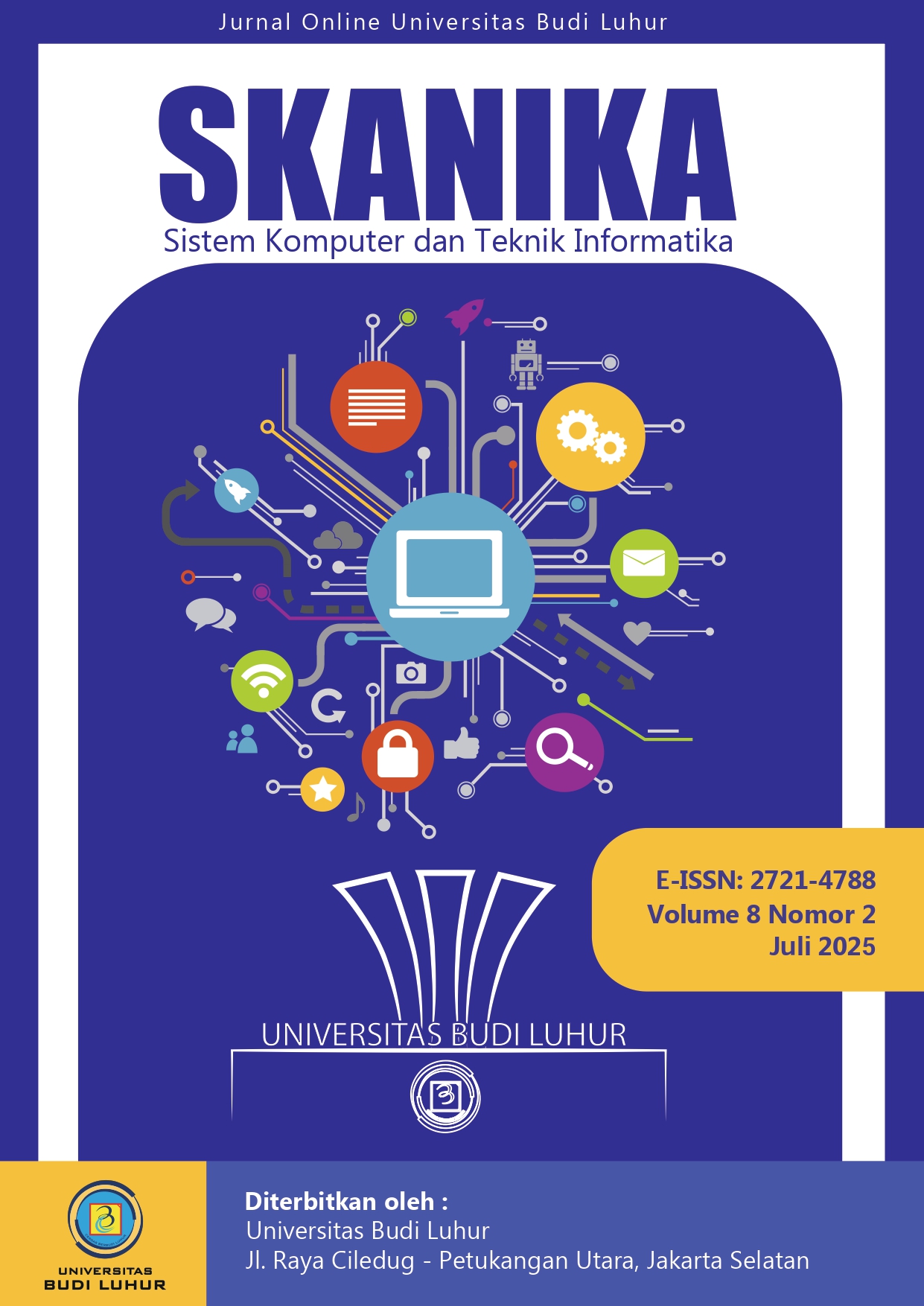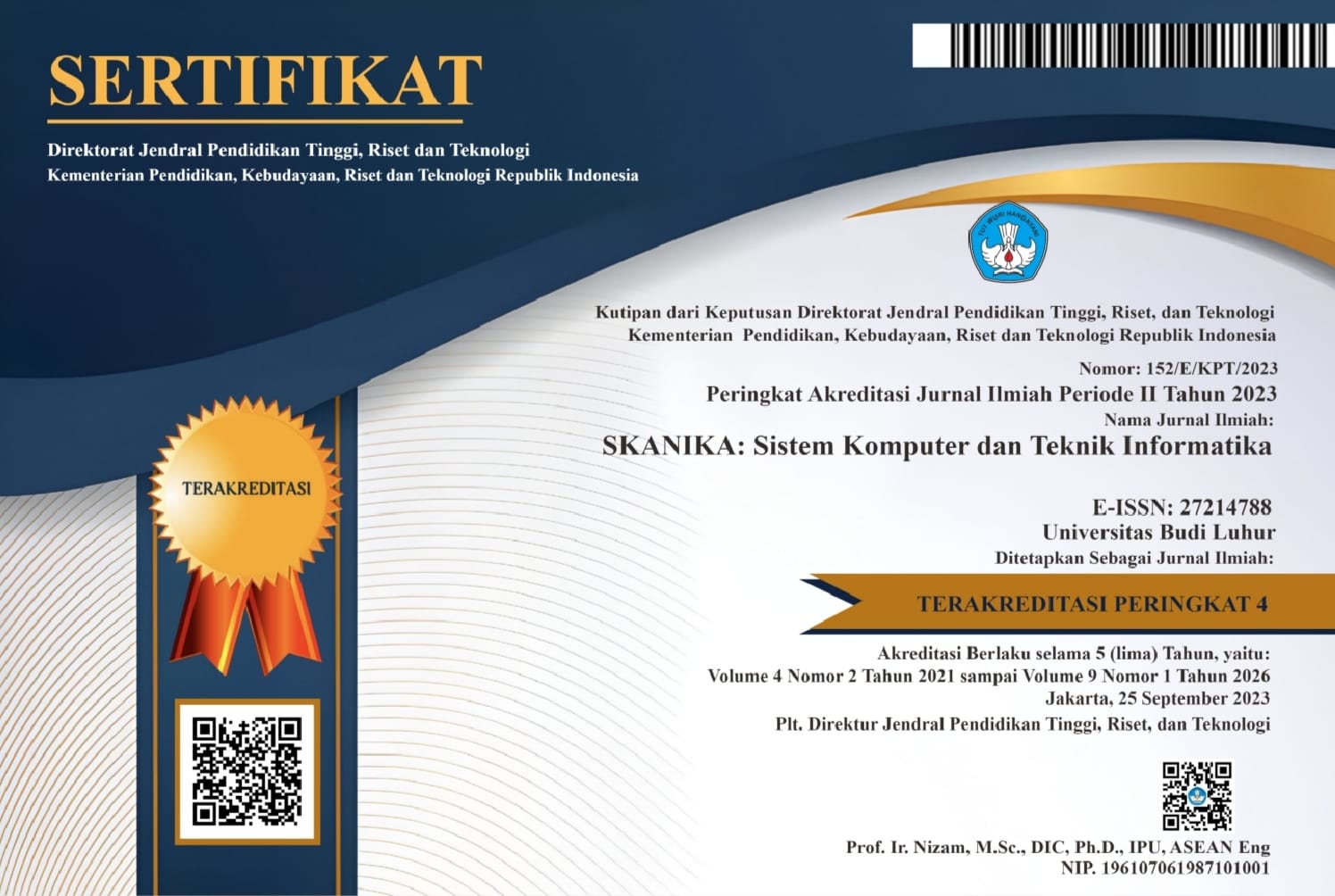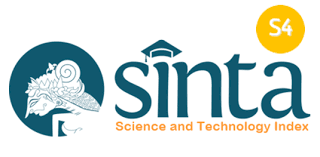PENERAPAN METODE SIMPLE ADDITIVE WEIGHTING DALAM PEMILIHAN GURU TERBAIK: STUDI KASUS PADA SEKOLAH DASAR NEGERI
DOI:
https://doi.org/10.36080/skanika.v8i2.3392Keywords:
Sistem Pendukung Keputusan, SAW, Pemilihan Guru, Evaluasi KinerjaAbstract
Fair and objective teacher performance evaluation is essential for improving the quality of education. However, the process of selecting outstanding teachers at the elementary school level is often conducted subjectively without a structured approach.. This study aims to develop a web-based decision support system using the Simple Additive Weighting (SAW) method to enhance teacher performance evaluation based on measurable criteria. The system utilizes seven primary criteria, Service-Oriented, Accountable, Competent, Harmonious, Loyal, Adaptive, and Collaborative. Each criterion is assigned a specific weight used to calculate the final preference value for each teacher as an alternative. System validation was carried out through Black Box Testing, White Box Testing, and User Acceptance Testing (UAT) involving end users. The test results indicate that all system features function properly and are capable of accurately displaying the teacher ranking order. One teacher achieved the highest preference score, demonstrating the effectiveness of the SAW method in supporting objective and efficient decision-making. The system has the potential to be widely implemented to improve clarity and accountability in teacher performance evaluation.
Downloads
References
[1] P. Dellia, Dasar Sistem Informasi, Malang: Literasi Nusantara, 2021.
[2] F. Y. Rahman and A. Setiawan, Sistem Pendukung Keputusan, Ruang Karya Bersama, 2024.
[3] K. B. Zulkarnain, H. Patrie, and G. Triyono, “Penerapan Metode Simple Additive Weighting Untuk Pemilihan Guru Terbaik Pada SMA Negeri 32 Jakarta,” Seminar Nasional Mahasiswa Fakultas Teknologi Informasi, vol. 2, pp. 881–888, 2023.
[4] W. A. Maulana, A. Nugroho, and T. Adriyanto, “Sistem Pendukung Keputusan Pemilihan Supplier Menggunakan Metode Simple Additive Weighting Di Toko Bangunan Ragil,” Seminar Nasional Inovasi Teknologi UN PGRI Kediri, 24 Juli 2021. pp. 154–159, 2021.
[5] A. Ahmad and Y. I. Kurniawan, “Sistem Pendukung Keputusan Pemilihan Pegawai Terbaik Menggunakan Simple Additive Weighting,” Jurnal Teknik Informatika, vol. 1, no. 2, pp. 101–108, 2020, doi: 10.20884/1.jutif.2020.1.2.14.
[6] V. M. M. Siregar and H. Sugara, “Sistem Pendukung Keputusan Pemilihan Sepeda Motor Bekas Menggunakan Metode Waspas.” Jurnal TEKINKOM, vol. 5, no. 2, 2022, doi: https://doi.org/10.37600/tekinkom.v5i2.393.
[7] N. Agustina and E. Sutinah, “Penerapan Metode MOORA pada Sistem Pendukung Keputusan Pemilihan Aplikasi Dompet Digital,” Jurnal Nasional Informatika dan Teknologi Jaringan, vol. 6, no. 2, pp. 299–304, 2022, doi: 10.30743/infotekjar.v6i2.5012.
[8] I. A. Setyani and Y. R. Sipayung, “Sistem Pendukung Keputusan Menentukan Siswa Berprestasi dengan Metode SAW (Simple Addtive Weighting),” Jurnal Sistem Komputer dan Informatika, vol. 4, no. 4, pp. 632-641, 2023, doi: 10.30865/json.v4i4.6179.
[9] R. Fajar and S. Subandi, “Aplikasi Kriptografi Rc4 Untuk Pengamanan Email Berbasis Web pada PT.Titan Infra Energy,” SKANIKA: Sistem Komputer dan Teknik Informatika, vol. 4, no. 1, pp. 45–50, 2021, doi: 10.36080/skanika.v4i1.2352.
[10] M. F. A. Prasetyo et al., “Rancang Bangun Tracking Pengiriman Berbasis Website Menggunakan Metode Systems Development Life Cycle (SDLC) dengan Model Waterfall,” Jurnal JTIK (Jurnal Teknol. Inf. dan Komunikasi), vol. 8, no. 2, pp. 306–315, 2024, doi: 10.35870/jtik.v8i2.1387.
[11] R. A.S., Analisis dan Desain Perangkat Lunak. Informatika, Bandung, 2022.
[12] M. H. Lubis et al., Sistem Pendukung Keputusan. Deepublish, 2022.
[13] M. Khasanah, “Digitalisasi Layanan Administrasi Pendidikan,” Proceedings of International Conference on Educational Management , vol. 2, no. 1, pp. 455–466, 2024.
[14] A. Wantoro, Rusliyawati, and R. I. Borman, Buku teks: Sistem Pendukung Keputusan, Universitas Teknokrat Indonesia Press, 2024.
[15] D. E. Nadindra and J. C. Chandra, “Sistem Iot Penyiram Tanaman Otomatis Berbasis Arduino Dengan Kontrol Telegram,” SKANIKA, vol. 5, no. 1, pp. 104–114, 2022, doi: 10.36080/skanika.v5i1.2887.
[16] F. K. S. Dewi, S. P. Adithama, and A. T. Suhardi, “Pengujian Aplikasi Doctor to Doctor Menggunakan Metode Black Box Testing,” KONSTELASI Konvergensi Teknologi dan Sistem Informasi, vol. 3, no. 1, pp. 61–72, 2023, doi: 10.24002/konstelasi.v3i1.7046.
[17] M. A. Nurwicaksono et al., “Optimasi Sistem Informasi Konsultasi Hukum melalui Pendekatan Pengujian Kombinasi White-box dan Black-box,” Jurnal Manajemen Informatika, vol. 14, no. 1, pp. 1–15, 2023, doi: 10.34010/jamika.v14i1.10110.
[18] M. Y. . S. C. and P. A. L. Ibrahim, “Evaluasi Hasil Beta Testing Dan User Acceptence Testing Pengguna Terhadap Aplikasi Dietary,” eProceedings Eng., vol. 11, no. 6, pp. 6681–6691, 2024.
Downloads
Published
How to Cite
Issue
Section
License
Copyright (c) 2025 Muhammad Kurnia Affandi, Humisar Hasugian, Wulandari Wulandari, Nofiyani Nofiyani

This work is licensed under a Creative Commons Attribution-ShareAlike 4.0 International License.
CC BY-SA 4.0
Creative Commons Attribution-ShareAlike 4.0 International
This license requires that reusers give credit to the creator. It allows reusers to distribute, remix, adapt, and build upon the material in any medium or format, even for commercial purposes. If others remix, adapt, or build upon the material, they must license the modified material under identical terms.
BY: Credit must be given to you, the creator.
SA: Adaptations must be shared under the same terms.ng












